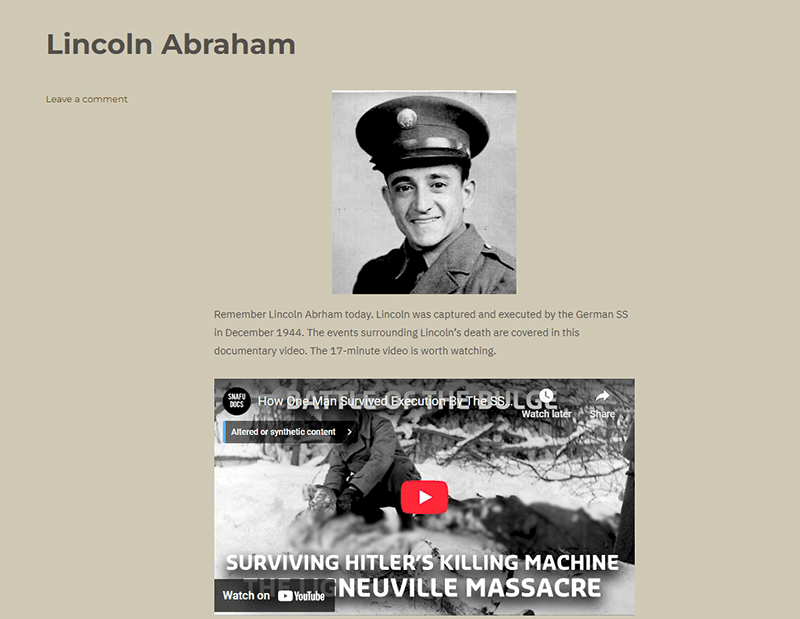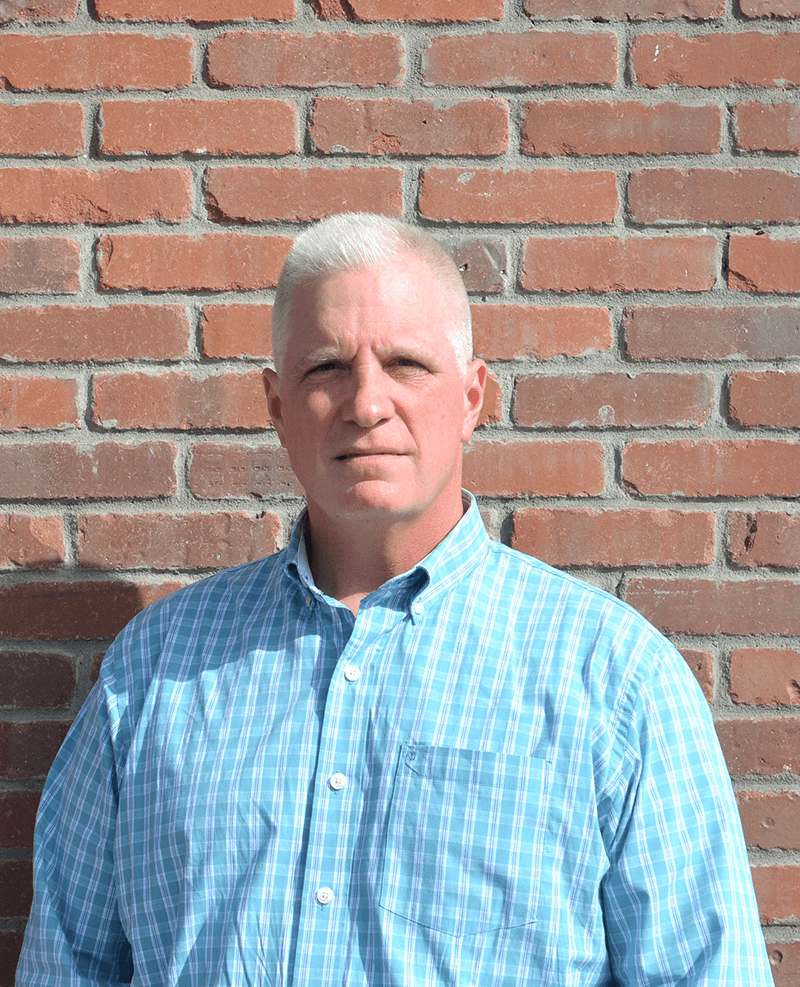
Screen grab of the website. (Provided)
It all started with one person, one Edison High School veteran who died for his country in World War II.
Mike Warne did some research in 2019 on Richard Kraus, Edison’s Medal of Honor recipient — the year marking the 75th anniversary of Kraus’ death while saving his comrades on a Pacific island.
Kraus’ name is one of 116 on a bronze plaque at the school, all Edison students who gave their last full measure in the war. Edison probably had more students give their lives in the Second World War than any other high school in Minnesota.
“I started thinking, what about the rest of them? What are their stories?”
Warne said the work came in fits and starts at the beginning. “I’d work on it for a while and then peter out.” Determined, he found information about 114 of students on the plaque. Eventually, he got all 116, 115 men and one woman.
“I’ve been interested in World War since I was a little kid. I’d watch ‘Victory at Sea’ on television and anything else I could find.”
His research was mostly done through websites and the first of many amazing stories he found was that of Lincoln Abraham, the first name on the plaque.
“When Abraham was 18 years old, he saw that the roof on his neighbor’s house was on fire and he got a ladder and a bucket of water and put it out. It was written up in the paper,” Warne said.
“In World War II, he was murdered by the German SS. It was at the start of the Battle of the Bulge and his outfit was being overrun by the German army. He got on top of a disabled vehicle and used the machine gun to keep the Germans at bay while his comrades escaped.
“He was captured and a little while later he and seven others were executed by the SS.” It was part of the infamous Malmedy Massacre in Belgium.
Warne said he was curious about what it was, growing up in Northeast, that shaped Abraham. “What causes a boy to climb a ladder to his neighbor’s roof and put out a fire? And what causes him — he was a mess sergeant, not an infantryman — to man a machine gun and save his comrades’ lives?”
To Warne, the lives of all these Edison heroes are worth remembering. He is a 1989 Edison graduate, as was his wife and high school sweetheart, Charlene.
“To think that they walked the same streets and played in the same gymnasium that we did. Imagine all the kids you knew in high school, one was the kid who played football, another was in all the musicals, another one was super smart.
“And when you do some research and find that you knew that house where they grew up, you knew people on that block.”
Warne grew up on Monroe Street, just three houses down from Edison. He played football, hockey and track and was part of a couple of city championships.
“I wanted to humanize these people, to make them more relatable. I wanted people to be able to visualize these people’s lives.”
Five years of research went by, and Warne wanted to present his information this year in honor of the 80th anniversary of the war’s end. He thought of a book, but chose to do a website which is now up and running.
“I named it that because whenever you talk to veterans who have served and you call them a hero, they always say, no, the real heroes are the ones who didn’t come home.”
While nearly all the research is done, it’s a matter of putting it together on the website, and Warne is cranking out two or three stories a week. As this was being written, 33 biographies are now up for people to see.
They contain pictures, news stories, a biography and anything else Warne could find.
His research has been exhaustive, using many existing sites, and then combining all the material together. “I’m as thorough as I can be because these people deserve it. I know it’s only a snapshot of their lives, but I want to paint the most complete picture I can.”
The first step in his process involves going to the “Find a Grave” website where he can obtain the birthdate and where they are buried. Next stop is Ancestry.com where there may be quite a bit of information if a relative was interested in genealogy. Sometimes pictures or family contacts are included.
Next is a site called “Fold 3” which contains thousands of unit histories and other information. “I can determine where their unit was on the day they died. If I can find the story, I’ll use the story, even though some of them are quite graphic. It’s his story.”
He will usually use a picture of the veteran’s grave marker. “I knew one guy was buried in an American cemetery in Tunisia. I wrote to the cemetery and they sent me a picture.”
Warne will use any other source he can think of, including public libraries, the National Archives, unit yearbooks, the American Battle Monuments Commission and local newspapers. “I want to find his whole life. I just keep searching, searching, searching, every little lead I can track down.”
He includes for every person on the website their draft card. “It’s written and signed in their own writing. It’s a little bit of them.”
The stories are all different. “Twenty of the 116 died in training. One guy died of pneumonia in a hospital. One guy drove a tank onto Utah Beach on D-Day, and another guy was on the Bataan Death March.”
A story about William Robertson, recently posted on the site, details his football career, earning all-city status as a right tackle for the Tommies. It contains all the stories of his death in a plane crash while he was in pilot training in Colorado.
The Edisonheroes site contains the story of the Falldin brothers, Arthur and Leonard. The family sent eight sons off to war, perhaps the most of any family in Minnesota. The American Legion Post in Northeast is named in their honor.
Having done all this research and now showing it to the public, how does Warne feel about his project?
“It’s humbling.
“You learn their stories, you learn how they were as people, you try to imagine what the families went through. They sent their son to war in 1942 or 1943 to an island in the Pacific or to Europe and now they’re buried there.”
Warne wonders if there’s something in the character of Northeast Minneapolis that led to this one high school making such a remarkable sacrifice for the nation.
“As I learn the stories, I can see their courage. It’s inspirational. Hopefully people will get reminded of what they did, what they sacrificed 80 years ago. If this causes just a few people to think of what they did, I’d call that a successful outcome to the project.”
His work was also driven by the fact that this may be the last chance to capture these stories. “Time has almost passed them up.”

Mark Warne. (Al Zdon)